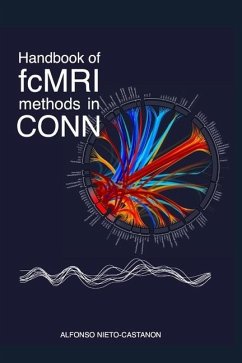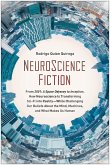This handbook describes methods for processing and analyzing functional connectivity Magnetic Resonance Imaging (fcMRI) data using the CONN toolbox, a popular freely-available functional connectivity analysis software.Content description [excerpt from introduction]The first section (fMRI minimal preprocessing pipeline) describes standard and advanced preprocessing steps in fcMRI. These steps are aimed at correcting or minimizing the influence of well-known factors affecting the quality of functional and anatomical MRI data, including effects arising from subject motion within the scanner, temporal and spatial image distortions due to the sequential nature of the scanning acquisition protocol, and inhomogeneities in the scanner magnetic field, as well as anatomical differences among subjects.Even after these conventional preprocessing steps, the measured blood-oxygen-level-dependent (BOLD) signal often still contains a considerable amount of noise from a combination of physiological effects, outliers, and residual subject-motion factors. If unaccounted for, these factors would introduce very strong and noticeable biases in all functional connectivity measures. The second section (fMRI denoising pipeline) describe standard and advanced denoising procedures in CONN that are used to characterize and remove the effect of these residual non-neural noise sources.Functional connectivity Magnetic Resonance Imaging studies attempt to quantify the level of functional integration across different brain areas. The third section (functional connectivity measures) describes a representative set of functional connectivity measures available in CONN, each focusing on different indicators of functional integration, including seed-based connectivity measures, ROI-to-ROI measures, graph theoretical approaches, network-based measures, and dynamic connectivity measures.Second-level analyses allow researchers to make inferences about properties of groups or populations, by generalizing from the observations of only a subset of subjects in a study. The fourth section (General Linear Model) describes the mathematics behind the General Linear Model (GLM), the approach used in CONN for all second-level analyses of functional connectivity measures. The description includes GLM model definition, parameter estimation, and hypothesis testing framework, as well as several practical examples and general guidelines aimed at helping researchers use this method to answer their specific research questions.The last section (cluster-level inferences) details several approaches implemented in CONN that allow researchers to make meaningful inferences from their second-level analysis results while providing appropriate family-wise error control (FWEC), whether in the context of voxel-based measures, such as when studying properties of seed-based maps across multiple subjects, or in the context of ROI-to-ROI measures, such as when studying properties of ROI-to-ROI connectivity matrices across multiple subjects.








